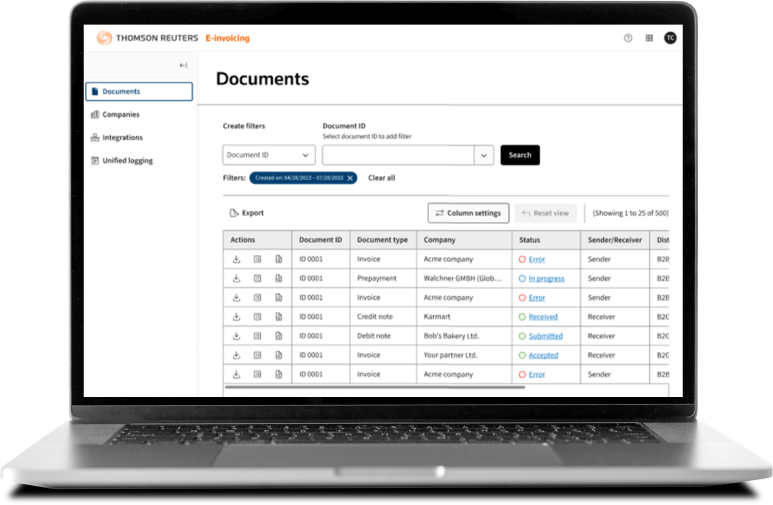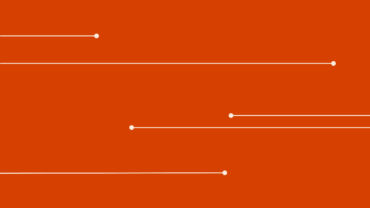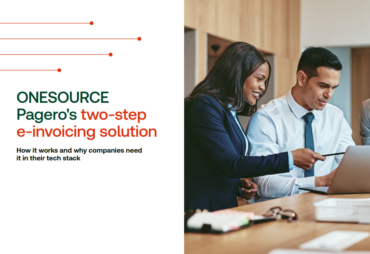Jump to:
| What is e-invoicing? |
| Benefits of e-invoicing |
| Challenges of e-invoicing |
| The future of e-invoicing |
| Choosing the right solution |
“Opening up the books” takes on a whole new meaning with the introduction of e-invoicing. While paper invoicing has been on the decline for decades, the increased impetus on corporations to provide more data, more transparency, and more cooperation with governments around the world has led to e-invoicing taking center stage as the next revolution in indirect tax accounting, auditing, and reporting. Selecting the right e-invoicing solution in an ever-changing, complex world is likely to be on the agenda in the coming months and years for many MNCs, but finding a comprehensive, integrated, compliance solution will reap major benefits in the short and long-term.
What is e-invoicing?
E-invoicing, or electronic invoicing, is the process of generating, sending, receiving, and storing invoices in a digital format.
E-invoicing differs from digital invoicing in a couple of ways. Where digital invoicing refers to invoices that can be sent electronically, in a format such as a PDF, e-invoicing refers to digital invoicing that contains structured data. E-invoicing creates invoices in an XML data file format where more descriptive information is coded into the invoice, including direct and indirect tax data, to comply with domestic and international government standards for financial reporting. It also allows companies to send and receive invoices electronically, process invoices faster and with fewer errors, and allow for a more accurate and expedited audit and reporting process.
E-invoicing solutions will typically speak to business systems, such as procurement and inventory management, to create a single source of data that mitigates the need for additional resources in reporting and analysis. Businesses that exchange e-invoices will find a lot more automation in data input, shortening the payment cycle as less time will be required to verify the invoice information.
Corporations will also be able to meet government standards for on-demand, real-time reporting through the creation of single e-invoice marketplaces and secure data portals.
The evolution of B2B payments
In B2B sales, there are several common types of invoices including:
- Sales invoice
- Proforma invoice
- Commercial invoice
- Timesheet invoice
- Recurring invoice
Once computers became a mainstay of business operations, the possibilities of improved invoicing expanded. Envelopes and stamps turned into email attachments, and accounts receivable and accounts payable departments decreased the number of employees required as accounting and bookkeeping software developed the ability to generate and process multiple invoices and payments faster. The use of digital signatures, encryption, and other security measures improved the number of ways invoices could be sent, and the number of payment options expanded.
Governments were paying attention to the development of B2B invoicing and payments as the digital age began and saw an opportunity to tighten up auditing and reporting for improved capture of direct and indirect taxes.
- 1960s – Electronic Data Interchange (EDI) was developed allowing companies to exchange structured data electronically.
- 1980s – Large corporations began adopting EDI in their business operations; however, the cost and complex integrations were prohibitive to all but the largest MNCs.
- 1990s/2000s – The rise of the internet and web-based technology, including eXtensible Markup Language (XML), offered more flexibility for information exchange and standardized data.
- 2010s – Governments began to recognize the benefits of e-invoicing invoicing and began implementing frameworks to capture the benefits from a compliance standpoint.
- 2020s – Global cooperation on implementing standardized invoicing mandates and regulating indirect taxes are made possible by the advancement of e-invoicing through new software, such as ONESOURCE Pagero.
Benefits of e-invoicing
As with most things that have been impacted by the digital age speed, efficiency, and accuracy have improved with the introduction of e-invoicing. Where paper, and even digital invoicing, remains a labor-intensive process plagued with errors and the need for complex processes and systems, e-invoicing is set to revolutionize how companies do business. E-invoices are easier to track, store, and audit for increased efficiency and accuracy. Streamlined processing and payments reduce the time between invoice and settlement, leading to better supplier relationships.
The costs associated with printing and mailing paper invoices are eliminated, as is the need for multiple tools with advanced accounting software that provides a single source of truth. There is a reduction in the amount of time spent auditing and preparing financial reports and reporting is more secure and transparent.
The timing for e-invoicing couldn’t be better for governments and MNCs as governments and governing bodies around the globe look to crack down on tax evasion and address the way corporations are sheltering and obscuring their revenue and profits through complex cross-border accounting.
Perhaps the greatest benefit of e-invoicing is that it addresses the increasing compliance required globally, such as continuous transaction controls (CTC) that require mandatory real-time or near real-time invoice reporting. While the ever-changing landscape continues to present numerous challenges for keeping compliant with continual updates and new compliance standards at state, domestic, and international levels, the ability to provide real-time reporting with tools, such as ONESOURCE Pagero, reduces complex indirect tax calculations and automatically scans for and includes the updates calculations within the program itself.
In the U.S. the Business Payments Coalition reported a 25% adoption by U.S. companies of e-invoicing. The introduction of a single platform for sharing e-invoicing data, PEPPOL, is already in effect to support the growth of e-invoicing, cooperation, and transparency.
In the E.U. the European Committee for Standardization published the standard on European e-invoicing with the European Commission publishing fact sheets on each country’s requirements as a supporting function in the European Commission’s new proposal on Value Added Tax (VAT) reporting.
Other countries implementing standards include Brazil, Mexico, Chile, Australia, Singapore, and India.
Challenges of e-invoicing
Adopting e-invoicing requires a sound plan for implementation and deployment. As with the introduction of any new platform, compatibility will be a primary challenge for the immediate future as structures and compliance frameworks are introduced and companies adopt e-invoicing at different rates.
While automation will take over for e-invoicing, there will remain the need for manual entry of data for invoices that are not machine-readable. Consequently, there may be resistance to workflow changes and processes, both internally and externally, with customers and suppliers. And though the invoices will offer improved data security and encryption, invoices sent via email may be subject to spam filters from email service providers and company firewalls.
 |
|
E-invoicing
With so much tax revenue for governments and the potential for non-compliance fines and penalties on the line, the future of e-invoicing is strong. Over the next few years, the expectations are for:
- Wider adoption of e-invoicing as more governments implement mandatory reporting systems and standards.
- MNCs will be required to improve on real-time, accurate, and transparent reporting by adopting e-invoicing practices.
- The increased level and detail of data available will offer a greater scale and scope of information for decision-makers.
- The European Union is leading the way in creating a single market for e-invoicing, making it easier for businesses in different countries to conduct transactions.
- E-invoicing will become more attractive as part of ESG initiatives.
- The global e-invoice market will continue to expand, making it an attractive investment opportunity.
- Artificial intelligence may also elevate the user experience and automation of traditionally labor-intensive, manual processes.
Choosing the right solution
As businesses navigate the complex landscape of e-invoicing, it’s essential to choose a solution that can simplify compliance, increase efficiency and which is easily scalable. ONESOURCE Pagero is a leading e-invoicing solution that enables businesses to seamlessly comply with global e-invoicing mandates. It provides a fully integrated solution, including automated compliance processes, increased operational efficiency, and simplified integration across various government and business networks such as PEPPOL and 70+ other accredited networks for over 70 countries.
This technology goes beyond e-invoicing compliance and automates accounts payable and accounts receivable processes with an open global network that connects to over 100 business networks and more than 14,000,000 customers and suppliers.
But what’s more, ONESOURCE Pagero is part of the ONESOURCE suite of solutions, which provides comprehensive tax compliance support to businesses across the entire transaction lifecycle. From tax determination and compliance to reporting and analytics, ONESOURCE offers a single, unified platform to manage tax requirements. By choosing ONESOURCE Pagero, businesses can accelerate growth with trusted, automated, e-invoicing software that streamlines global compliance processes to unlock valuable business insights.
 |
|









